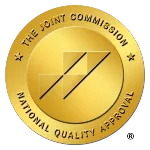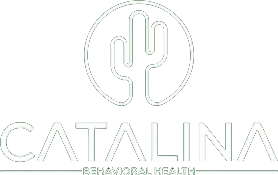Proven Methods for Dealing with Alcohol and Drug Cravings
Over the years, plenty of methods have hit the addiction and substance abuse treatment scene that potentially help users cope with intense physical sensations and mental repercussions of sobriety. For those who have never experienced these urges, it’s difficult to properly demonstrate the anxiety caused when they manifest.
Just know that they’re by no means easy to deal with, and will potentially plague a user for years after they achieve sobriety. An evidence-based way of avoiding the temptation to succumb to such cravings is known as ‘Surfing the Urge,’ and is one of the many practices we employ at Catalina Behavioral Health to promote lasting recovery success for our clients.
“Urge Surfing” has become a proven method for dealing with this mental health side effect, one that comes on strong for many clients as a result of addictive behaviors.
If you or someone you love has struggled with addiction in the past and now struggles with urges and cravings, you might want to stay until the end, as this article could potentially be life-changing.
24 Hour Detox and Rehab Helpline – Call Now!
Defining an Urge
To understand what urge surfing is, first, you must clearly define what an urge consists of. An urge is a strong desire to complete an action that generally manifests as a result of some type of trigger. For example, when a smoker must have a cigarette after a meal – this is a textbook example of an urge.
For someone seeking recovery from alcohol or drug addiction, an urge changes from guilty pleasure to a set of harmful impulses in the blink of an eye. These urges are a natural part of the recovery process but are one of the most detrimental impediments to a successful recovery.
Learning how to deal with urges is a vital part of any recovery plan – without this plan in place, you are almost certainly destined to fail. So, please use our resource and urge surfing worksheet to get started and be prepared now!
How Have People Dealt with Urges for Drugs and Other Substances in the Past?

For centuries people have struggled to deal with the urges to act out a bad habit. Currently, the urge to abuse drugs or alcohol is probably one of the most prominent modes of addiction people face. In the past, people have attempted to curb the urges of addiction by using some of the following methods:
- Chewing gum
- Altering your breathing pattern and using breathwork
- Listening to music
- Meditating
- Calling their NA or AA sponsor
- Participating in a hobby
Unfortunately, the grip of alcohol and drugs can be so strong that even the strongest-willed people can fall victim to these urges. Urges are almost always brought on by some type of trigger.
Before learning about urge surfing, it helps to understand some of the triggers that bring about an urge to act impulsively in the first place.
What Triggers an Urge?
Some of the most common triggers for urges include:
- Eating a meal
- Certain social situations
- Smells, tastes, or noises that are connected to addictions
- Visiting places you associate with bad habits
- Seeing someone else partake in your addiction
- Hearing certain words and phrases that you relate to your bad habit
- Experiencing a sad or depressing thought
- Stress and anxiety
- Deep concentration
Honestly, the list of triggers can go on indefinitely. But now that you have a general idea of how the whole mechanism of urges works, let’s take a look at urge surfing.
What Is Urge Surfing?

Urge surfing is a technique created by clinical psychologist Alan Marlatt that’s used to help curb relapses for those who suffer from substance abuse disorders. However, it’s also a powerful tool for those suffering from any type of addictive behavior. The model behind urge surfing is designed to reduce the anxiety caused by things like post-acute withdrawal and potential depression that an urge blankets you with.
Fighting an urge to kick and scream hardly does any good. Obviously, you’ve attempted to fight the addiction in the past and the addiction won. The only way to combat these feelings is to give in and ride the wave.
Addictive Behaviors and Letting Physical Sensations Subside
Picture the urge as a strong rush of the current in a river that you are powerless against. To fight this surge of water is to experience certain death. In most cases, fighting only makes your suffering more intense.
Instead of fighting this surge, step back and watch it transpire. Appreciate the power of it but instead of fighting it, just remain calm in the moment as it passes. This is the power of urge surfing – it causes the brain to remain aware of the existence of these urges – but our power doesn’t come in fighting the urge. Instead, our power comes from the choices we make when the urge manifests.
In the section below, we outline the best practices for urge surfing.
Find Proven Support with Treatment at Catalina!
Urge Surfing Made Easy: 5 Steps to Sober Surfing Like a Pro
1. Identify
Focus on the physical element of the urge and identify exactly how you feel when you notice it. Close your eyes and allow yourself to pinpoint exactly where these feelings are coming from.
Does your chest hurt? Do your jaws or neck tighten up? Does your stomach cramp?
Stay vigilant and mark the exact point of these sensations.
2. Focus
Now that you’ve narrowed down the region of the body – get a little more specific with the sensation itself.
Is it a stabbing pain? Is it a numbing pain? Do you feel lightheaded? How long does it last and is it more intense in the beginning or end?
3. Make Note of Your Breathing
As the urge comes over you, be aware of your breathing. Breathing and learning to adopt breathwork practices can be very helpful in recovery as a whole. Think about the parts of the body that are involved with breathing – the lungs, the mouth, the nose – and follow the breath as it passes through the systems of the body.
Be sure to inhale through the nose and exhale through the mouth.
4. Place the Attention Back On the Body

Gradually came back in tune with the body that was impacted by the sudden rush of the cravings. Picture how every breath decreased the weight or the impact of the urge. Make note of how your mind remaining on breathing lowered the power of the physical sensation brought on by the urge.
Picture yourself inhaling life and exhaling poison or death as you breathe – empower your breathing this way.
5. Remain Present
Think about what you just did. Make note of how it feels to have conquered something that was once crippling. You essentially overcame the urge involuntarily by placing yourself in an empty head space and separating yourself from the urge.
By removing yourself from the urge, the urge is powerless, as all your energy is placed on the cleansing mechanism of the breathing patterns.
Keep your mind on the body part that was impacted and notice how much better it feels. As it happens again, imagine yourself as a surfer riding over the wave of the urge. It helps to accomplish this in a quiet place. If it happens in public, retreat to your vehicle if you have to. Get in a comfortable position and repeat the steps above.
Get Proven Treatment Options at Catalina Now!
Fight Urges and Get Lasting Recovery Support at Catalina
At Catalina Behavioral Health, we have group and individual sessions that teach techniques just like this – techniques that empower you to overcome your addiction and experience successful recovery.
For more information on how we can help you on your journey, contact our admissions team today. All calls are kept strictly confidential, so please reach out to get proven support options among our programs now!





